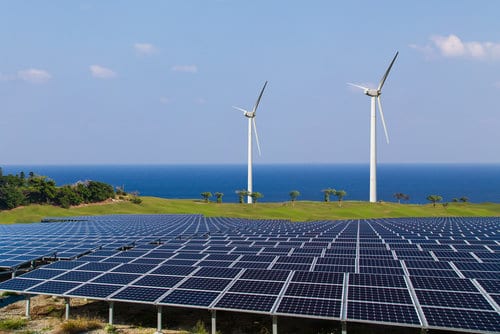

Shuttershock


Anyone who has ever tried going on a family holiday without a clear plan knows that the end result is generally chaos.
A little planning can be the difference between a group of happy campers and a car full of grumpy kids getting lost on the way to second-rate accommodation in a third-rate destination.
If you have no clear plan – or one that keeps changing – you can still achieve things, but it’s unlikely you’ll take the most efficient road to get you there.
Last month leaders from across the globe gathered in New York to sign on to the global climate agreement that was reached in Paris. After years of talking, the event has provided hope for the future – and a clear long-term destination at the very least. But Australia still lacks a plan that takes us beyond 2020.
What the climate agreement means is change, and the renewable energy industry has developed a comprehensive plan to help Australia unlock the opportunities presented by the inevitable changes in our energy sector.
Power Shift is a blueprint for a 21st century energy system, a comprehensive policy map of actions to progressively increase the amount of electricity that is produced by renewable energy and phase out the oldest and dirtiest of our power stations.
Australia is ready for a quantum shift in the way our power is produced and delivered to our wall sockets. We can deliver a zero-carbon energy system by 2050 and renewable energy on every residential rooftop in the country. It means a smarter system that gives people more control of their electricity than ever before, and home energy storage that lets people maximise the value of the energy that is produced by technologies like solar power. And it means ever-more efficient innovations in energy productivity that enable us to do much more with less.
We should not underestimate the size of the task. More than three quarters of our electricity currently comes from coal, and currently about 14 per cent is produced by renewable energy. But this gives us a huge opportunity to reduce our emissions by moving away from coal and towards clean and innovative sources of power.
Almost three quarters of the coal-fired power plants in Australia are already at or past the date when you would expect them to go to the great coal pit in the sky. We need a plan to retire these in an orderly fashion if Australia is going to honour the commitments it made in Paris to limit global warming to well below 2 degrees Celsius. And as the cost of renewable energy continues to fall, it’s clear that renewable energy has become the lowest cost form of new generation in Australia.
Australia’s Renewable Energy Target provides a fantastic opportunity to create some 15,200 jobs and $40.4 billion in investment out to 2020. So much more can be achieved beyond 2020, with a clear commitment and strong policy and regulatory settings.
The Power Shift five-point plan for a 21st century energy system is as follows:
We can make these changes without compromising our prosperity and our way of life. Power Shift is economically responsible and will help Australia meet its climate commitments while ensuring we reliably satisfy our thirst for heating, cooling, hot water, laptops and smartphone recharging.
The longer we wait, the harder this transition becomes and the more likely we are to get lost along the way.
Kane Thornton is CEO of the Clean Energy Council
New research identifies electorate of New England as the most valuable patch of land in…
United Firefighters Union of Australia says Dutton's nuclear power plan introduces a "new, more dangerous…
Greens to block federal approval of new coal and gas mines in a hung parliament,…
Swiss startup inaugurates first removable solar power plant on an operational railway line, and is…
No matter where you live, you have a vote that matters on climate at this…
Queensland researchers say they have set a new efficiency record for a type of solar…